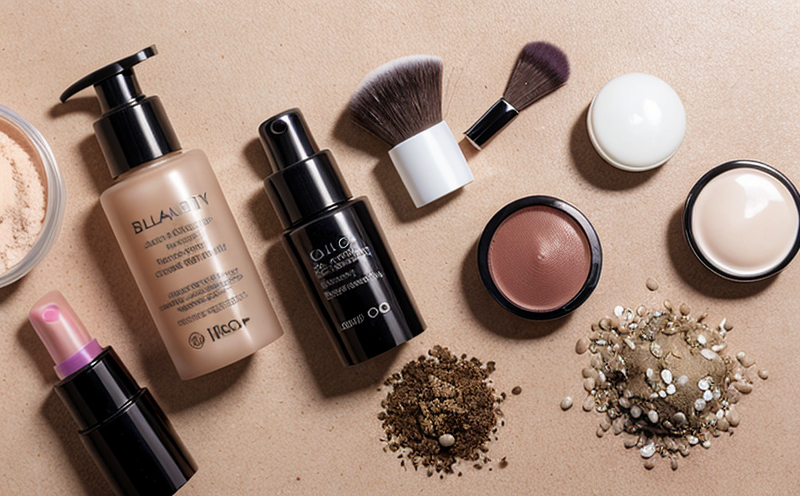Environmental Risk Assessment of Cosmetic Products
The environmental impact assessment of cosmetic products is a critical process that ensures the sustainability and safety of the products throughout their lifecycle. This service, focused on environmental risk assessment (ERA), evaluates the potential risks associated with the production, use, and disposal phases of cosmetic products. The primary goal is to identify and mitigate any adverse effects on the environment, including soil, water bodies, and air quality.
In the context of cosmetics testing, ERA involves a comprehensive analysis that considers various factors such as ingredient composition, formulation processes, packaging materials, and end-of-life disposal options. Compliance with international standards like ISO 14001 and ASTM D6954 is crucial for ensuring consistent and reliable results.
The process begins with the identification of potential environmental hazards associated with each component of a cosmetic product. This involves reviewing the chemical properties of ingredients, their solubility in different environments, and their biodegradability rates. The next step is to conduct laboratory testing using standardized methods outlined by relevant standards such as ISO 14075 for biodegradable plastics.
Testing procedures include both bench-scale experiments and full-scale pilot studies to simulate real-world conditions accurately. For instance, aquatic toxicity tests follow OECD guidelines (OECD 208) which assess the effects of cosmetic ingredients on fish embryos over a period of five days. Additionally, soil microcosm tests are conducted according to ASTM D6954 to evaluate long-term impacts on terrestrial ecosystems.
Once all data has been collected and analyzed, it is compiled into detailed reports that outline findings and recommendations for minimizing adverse environmental effects. These reports serve as valuable resources for quality managers, compliance officers, R&D engineers, and procurement teams responsible for sourcing sustainable raw materials.
Scope and Methodology
Scope:
- Evaluation of raw materials used in cosmetic formulations.
- Analysis of packaging materials and their disposal methods.
- Determination of biodegradability rates under controlled conditions.
- Assessment of aquatic toxicity levels using standardized protocols.
Methodology:
| Step | Description |
|---|---|
| Ingredient Review | Analyze chemical properties and environmental impact. |
| Bench-Scale Testing | Conduct initial tests to identify potential issues. |
| Pilot Studies | Simulate real-world usage and disposal scenarios. |
| Data Compilation | Gather results from various tests for comprehensive analysis. |
Industry Applications
The environmental risk assessment of cosmetic products plays a vital role in ensuring regulatory compliance and promoting sustainable practices within the beauty industry. Regulatory agencies around the world require manufacturers to demonstrate that their products do not pose undue harm to the environment.
For instance, in Europe, companies must adhere to REACH regulations (Registration, Evaluation, Authorisation and Restriction of Chemicals) which mandate rigorous testing procedures for new chemical substances before they can be placed on the market. Similarly, North American firms need to comply with FDA requirements regarding ingredient safety and labeling practices.
By incorporating ERA into their product development processes, cosmetic companies can proactively address emerging concerns related to environmental protection while maintaining competitive edge in an increasingly eco-conscious marketplace. This approach also helps build consumer trust by showcasing commitment towards responsible manufacturing techniques.





